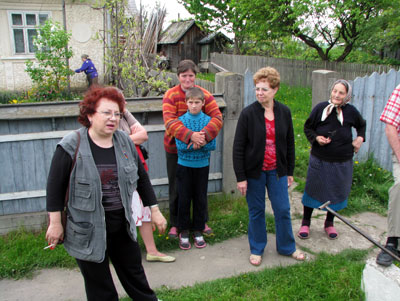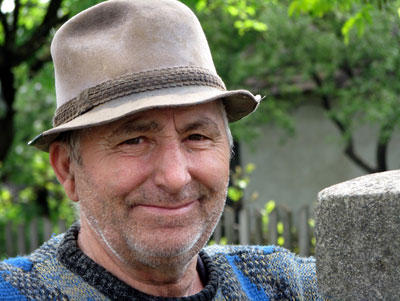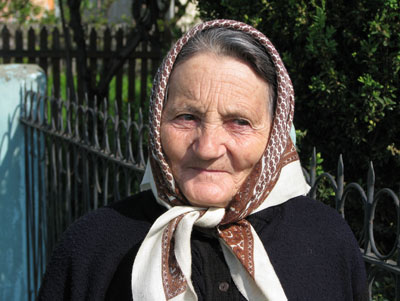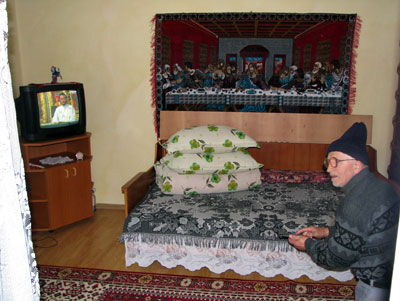Impressions of Romania
I led a group of 20 members of Friendship Force International (233 Peachtree St., Ste. 2250, Atlanta, GA 30303; 404/522-9490, www.thefriendshipforce.org) to Romania for a 17-day visit in May ’08; we were home-hosted for one week in Bras¸ov (citbrasov@brasovtourism.com). We also took a private bus tour of the countryside for a week and stayed in Bucharest for three nights. (As leader, I did not have to pay the program total of $1,885, but my wife, Rose, did.)
What we learned more than anything else is that Romania has much to offer the visitor. There are seven UNESCO World Heritage Sites; hundreds of medieval towns; castles; the Painted Monasteries, and much unspoiled wilderness. It’s a large country and in two weeks one can barely scratch the surface. We found the people to be friendly, especially in the country, although language was a problem.
In Bras¸ov, located in the southern Carpathian Mountains (part of Transylvania), Rose and I lived with a couple and their two young daughters. They shared their home, table, friends and customs with us — a week of wonderful insight.
Friendship Force in Bras¸ov had a full week of activities planned for our group, including riding on the Dracula Express steam train, a special visit to the citadel overlooking the city of Râs¸nov, a visit to Bras¸ov’s famous Black Church, parties in homes and dinners in restaurants.
Our last day in that city included a visit to Bran Castle, or Dracula’s Castle as it is known. It was the only place in Romania where we encountered tour buses, though not many. The castle tour was interesting but didn’t dwell much on Dracula. At the foot of the castle there were stalls selling T-shirts and other memorabilia.
One thing we learned is that families make their own drinking alcohol. Their palinka is about 60% alcohol and the tuica “just” 20%-30%. They make wine also, and it appeared common for Romanians to take their own homemade alcohol to a restaurant when eating out — with no corkage fees.
With the week in Bras¸ov over, we started a 7-day tour of Romania. We had our own bus and English-speaking guide all arranged by a remarkable travel agent, Costela Petcu (phone +4 0742 965 084 or +4 0723 564 437 or e-mail costelape04@yahoo.com), as was our stay in Bucharest.
A true professional, Costela speaks English well, knows her stuff and is reliable. This lady is also quick on her feet. One day into our tour, our guide got very sick and was hospitalized. By the next morning, Costela had another guide on the bus who was even better.
The last night of the tour, the hotel we were booked into in Bucharest had a power failure. Costela got the group accommodations and dinner at another hotel with less than four hours’ notice. That last day, I offered her a very substantial tip for all her extra work. She gracefully declined it.
Romania is a quite large country. There’s so much to see and the landscape changes daily. We traveled in a deep river gorge, through rolling forested hills much like in France and past wheat fields like in Kansas. We saw the Black Sea at Constant¸a and the delta area of the Danube.
Our bus tour probably was not representative of what a commercial bus tour might be. We stopped “off schedule” in some towns, and getting lunch for a group of 20 on short notice was sometimes a problem. In one city, our guide went in the kitchen to help cook.
Costela told our guide that because we were Friendship Force members, we were more interested in meeting people than most tourists would be. (“Faces, not places” is one of our mottos.) So one morning we just stopped in a small village. (Rather than a village center, think houses built along the sides of a 2-lane country road.) Some people came out of their homes to see why the bus had stopped and they invited us in to visit three or four homes and barns.
The homes were colorful, with handmade wall hangings, pillows and bedspreads. It all was very real; in one home, one bed was still unmade. On the porches were large bowls of eggs, butter and fresh milk sitting next to their refrigerator or freezer. The homes had TVs and phones and were quite nice, several of them built in traditional style for that area of Romania.
Then, with our guide translating, we stood at the roadside talking with the people. We gave some of them inexpensive Dollar Store reading glasses we had taken with us as well as crayons for some children.
Elsewhere, farmers drove horse-drawn wooden wagons with rubber tires. Many homes had sacks of potatoes for sale at roadside.
We visited a number of Romania’s famous, arrestingly beautiful Painted Monasteries, especially around Suceava. The interior and exterior walls are covered with colorful representations of saints and biblical scenes.
It’s only since the fall of Communism in 1990 that religious services are being conducted in these churches again. Ladies, you may need a scarf to enter, and no photos are allowed inside most of them. The exterior walls, however, offer many stunning photo opportunities.
Near the Danube’s delta we took an all-day boat cruise out of Tulcea. It was leisurely and pleasant but not worth investing a day of our time, I felt. We did not see a lot of bird or animal life, and the view was pretty much the same all day long.
While I enjoyed Constant¸a on the Black Sea and cruising the Danube’s delta there, reaching that area from Brasov required a long drive through mostly flat fields of different crops — pretty, but it did not match up with the dramatic high mountains, forests and rolling hills we had previously seen. Were I to do it over, I would spend more time exploring Bras¸ov, the Painted Monasteries, the Bicaz Gorge and southern Bukovina and Moldova.
On your own, language would be a problem, but Romania is a place to see before it changes too much more. Renting a car and driver would be a great way to go.
JOE PHELAN
Lincoln, CA




